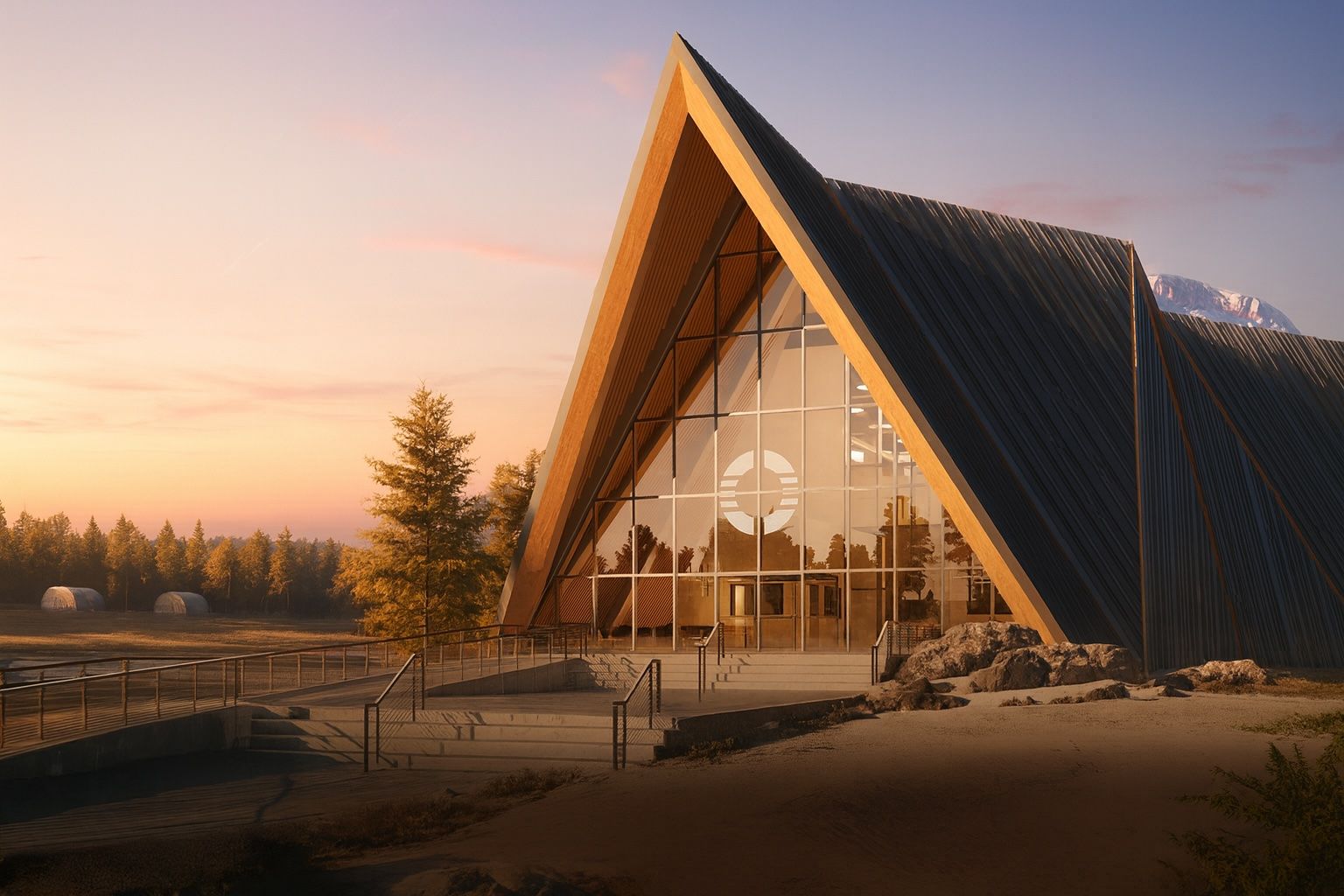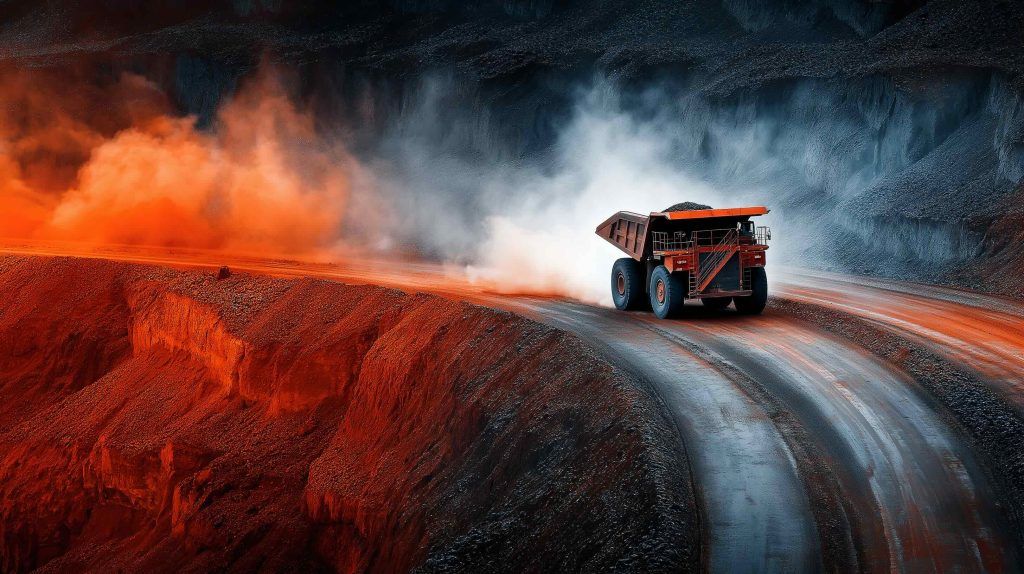- Spectacular 2025 rally: Advanced nuclear startup Oklo Inc. (NYSE: OKLO) has surged over 500% year-to-date, hitting an intraday high around $146 in early October [1]. This meteoric rise lifted Oklo’s market cap to roughly $20 billion, up ~1,200% from a year ago [2] – making it arguably the most valuable pre-revenue company in the U.S. stock market. (As of Oct 10, Oklo traded above $150 intraday before settling near $143.50 by the close [3].)
- Government fuel for the fire: U.S. government support ignited investor enthusiasm. The Department of Energy selected Oklo for fast-track pilot programs to build advanced nuclear fuel fabrication facilities and even broke ground on Oklo’s first microreactor at Idaho National Lab in late September [4]. These DOE initiatives – part of a national push to revitalize nuclear energy – effectively give Oklo a privileged role in next-gen reactor development, turbocharging the stock’s ascent.
- Hype vs. reality on Wall Street:Analysts are sharply split on Oklo’s outlook. Canaccord Genuity heralds a “new nuclear age” and just initiated coverage with a Buy rating and $175 price target [5] – the highest on Wall Street – seeing Oklo as a potential clean-energy leader. But many others warn of a bubble: a Bloomberg report cautioned that nuclear stocks may be “running ahead of reality” after Oklo’s 1,000%+ surge [6], and consensus targets sit around $83–$90, far below the current price [7]. Major banks like BofA and Goldman Sachs have downgraded the stock to neutral, citing stretched valuations [8].
- No revenue… yet: Despite the frenzy, Oklo remains pre-revenue and unprofitable. It lost about -$0.18 per share last quarter amid heavy R&D spending [9]. The company expects to burn $65–80 million in cash in 2025 with no meaningful revenue until ~2026 at the earliest [10]. In other words, all this valuation is based on future hopes – Oklo is still years away from generating sales.
- Big vision, big risks: Oklo’s innovative fast microreactors (which can recycle used nuclear fuel) position it as a potential clean-energy game-changer, even drawing comparisons to a “Tesla of nuclear.” [11] High-profile backers like OpenAI’s Sam Altman are betting on Oklo to power energy-hungry AI data centers with carbon-free power [12]. But skeptics note enormous execution risks – from regulatory hurdles to unproven technology – and point to insider selling (over $50 million cashed out by insiders during the rally) as cause for caution [13].
Oklo’s Stock Goes Nuclear – A 2025 Rally Defying Gravity
It’s not an exaggeration to call Oklo’s stock performance in 2025 explosive. Shares of this Silicon Valley-based nuclear startup have rocketed more than 500% in a few months, making Oklo one of the year’s hottest stocks [14]. A year ago hardly anyone knew this company; now its market value tops $20 billion after the stock hit $146.40 at its peak [15]. For context, Oklo went public via SPAC in 2024 and traded under $10 at the start of the year [16] [17]. By October 9, the stock closed around $138 – and on Oct 10 it spiked above $150 intraday before closing near $143 [18]. Such volatility shows both the euphoria and fragility of this rally.
What’s driving the frenzy? Much of Oklo’s momentum stems from renewed optimism in nuclear energy’s role in a high-tech, carbon-constrained future. Notably, Oklo is backed by prominent tech figures like OpenAI co-founder Sam Altman, and it sits at the nexus of two investment megatrends: advanced nuclear power and artificial intelligence (AI)’s surging demand for energy [19]. As Bloomberg observed, the “AI power boom” hype has suddenly turned next-gen nuclear stocks into a market obsession [20]. Investors are piling in, betting that Oklo could become a “new energy leader” – the Tesla of the nuclear industry, so to speak [21]. Oklo isn’t alone in this wave: peer SMR (small modular reactor) firms have also jumped (for example, NuScale Power’s stock tripled this year) amid what some are calling a budding nuclear renaissance [22].
Crucially, late-breaking government support acted as rocket fuel for Oklo’s stock. In late Q3 2025, the U.S. Department of Energy rolled out new programs to fast-track advanced reactors and domestic nuclear fuel production – and Oklo emerged as a big winner [23]. News hit on Oct 1 that Oklo was selected by the DOE for multiple pilot projects, including an Advanced Nuclear Fuel Line program (to build three high-tech fuel fabrication facilities for Oklo’s reactors) and a special Reactor Pilot authorization. These initiatives let Oklo bypass some of the usual Nuclear Regulatory Commission (NRC) licensing delays by working under DOE oversight [24]. In effect, the government handed Oklo a golden ticket to accelerate its reactor deployment. Not surprisingly, investors went wild – Oklo’s shares jumped ~10% to new highs on the DOE announcement amid what analysts called “investor euphoria” [25]. By mid-October, enthusiasm was so high that even far-out call options on Oklo were seeing heavy trading, as speculators bet on further short-term upside. (One market report noted unusual volume in Oklo call options expiring Oct 10, a sign of traders aggressively positioning for a continued spike.)
Building the “Tesla of Nuclear”: Tech Breakthroughs and Partnerships
Why all the excitement around an early-stage company? Oklo is promising a breakthrough in nuclear energy: compact, factory-built microreactors that provide reliable, carbon-free power and even run on waste fuel. Its flagship design, the Aurora Powerhouse, is a 75 MW (megawatt) fast reactor cooled by liquid sodium and designed to recycle used nuclear fuel [26]. In theory, Aurora units could be installed in remote communities, industrial sites, or data centers, providing steady electricity (and heat) for up to 20 years without refueling. Oklo’s reactors aim to “close the fuel cycle” by using spent fuel from other reactors – turning nuclear waste into an energy resource [27]. This tech, originally inspired by the successful EBR-II breeder reactor, could solve two problems at once: clean power and waste reduction.
In September 2025, Oklo broke ground on its very first Aurora reactor at the Idaho National Laboratory – a milestone pilot project on federal land [28]. The company is also developing a $1.6 billion fuel recycling facility in Tennessee to supply its reactors with advanced fuel, part of Oklo’s vertically integrated model [29]. Unlike traditional reactor vendors, Oklo plans to build, own, and operate its power plants, selling electricity via long-term contracts (power purchase agreements) rather than simply selling reactors [30]. This “build-own-operate” model could yield recurring revenue and higher margins down the road [31] – essentially making Oklo more of a clean utility company if all goes to plan.
Oklo’s bold plans have been bolstered by a string of partnerships and contracts in 2025. In a notable win, the U.S. Air Force selected Oklo as the intended awardee to deploy the first advanced fission reactor on a military base – a proposed Aurora microreactor at Eielson AFB in Alaska [32]. Under that deal (a Notice of Intent to Award), Oklo would design, own, and operate the reactor to supply the base with power and heat under a long-term contract [33]. This defense-sector interest underscores Oklo’s strategic value for energy security. Oklo also struck a collaboration with Vertiv (a major data-center infrastructure firm) to co-develop integrated nuclear power and cooling solutions for future AI data centers [34]. And through a small acquisition, Oklo added radioisotope production capabilities (via a company called Atomic Alchemy [35]), hinting at future revenue streams beyond just selling electricity – such as medical isotopes or fuel supply. All these moves feed the narrative that Oklo is more than just a reactor designer; it’s crafting an entire ecosystem around advanced nuclear technology.
Government policy tailwinds are also at Oklo’s back. Recent U.S. laws and executive orders (for instance, the ADVANCE Act and other pro-nuclear measures) are streamlining regulations for SMRs and extending clean energy tax credits [36]. In fact, Oklo management noted that a “One Big Beautiful Bill” signed in July extends investment and production tax credits for advanced nuclear through 2033 [37] – giving early projects like Oklo’s a decade of incentives. The Federal AI Action Plan explicitly calls for new reliable power sources to support America’s AI boom, which plays directly into Oklo’s hand as it pitches its reactors for data centers [38]. In short, Oklo seems to be in the right place at the right time: a convergence of technology, policy, and market need. As one analyst put it, “It could not be a better time to work in advanced nuclear energy” [39].
Hype Meets Hesitation: Analysts’ Mixed Verdict
Despite Oklo’s compelling story, experts are divided on whether the stock’s astronomical rise is justified. On one side, bulls argue that we’re on the cusp of a nuclear renaissance, and Oklo could become a category-defining leader in small reactors much like Tesla was for electric cars [40]. Investment bank Canaccord Genuity made headlines on Oct 9 by initiating coverage of Oklo with a “Buy” rating and a $175 price target [41] – implying significant upside even after the huge run-up. The Canaccord analysts cited Oklo’s vertically integrated approach and the massive demand for clean, distributed power, writing that “we see Oklo emerging as one of the leaders of a new nuclear age.” They are essentially betting that Oklo’s first movers advantage in fast SMRs and its government support could translate into outsized growth once its reactors come online.
Many on Wall Street, however, urge caution. Most analysts actually have a Hold or even Sell rating on Oklo at these levels [42] [43]. According to MarketBeat and other trackers, the average 12-month price target for OKLO is only in the $80s [44] – meaning analysts, on average, think the stock could fall nearly 40% from current prices. In fact, several banks downgraded Oklo in recent weeks: Bank of America and Goldman Sachs cut the stock to Neutral, flagging its stretched valuation relative to fundamentals [45]. Even some who believe in Oklo’s long-term promise say the stock has run too far, too fast. For example, Barclays and BofA both have price targets around $117 [46], well under the market price. A Citi analyst was even more bearish, slapping a mere $68 target (from September) on Oklo [47], effectively calling the stock a bubble.
Skeptics point out that Oklo has no revenue and won’t for years, yet is valued like a successful tech firm. “Until the company has a working prototype, shares are likely to be volatile,” one Motley Fool analyst warned, calling Oklo an “early-stage speculative bet” in the nuclear space [48]. The company’s own financials support a cautious view: Oklo’s Q2 2025 results showed a wider-than-expected loss and about $28 million in operating expenses for the quarter [49]. While Oklo did raise a hefty $440 million in June [50] – giving it over $680 million cash on hand to fund development – that cash will be steadily spent with no revenue coming in until at least 2026 or 2027. Even bullish analysts acknowledge Oklo will likely lose money for the foreseeable future, with losses projected through at least 2028 [51].
Another red flag for some: insiders have been selling into the rally. Oklo’s early investors and executives haven’t all just HODLed their shares. In fact, insiders sold more than $50 million worth of stock during the 2025 run-up [52]. For instance, one director sold 50,000 shares around ~$134 (over $6.7 million) in late September, and another executive sold ~41,000 shares near $70 earlier in the year [53]. While some selling is expected after a big move, the magnitude of insider sales suggests even those close to the company felt the valuation was rich. High institutional ownership (around 85% of shares [54]) means hedge funds and venture backers may also be taking profits. This insider activity “underscores caution,” as one analysis diplomatically put it [55]. In other words, if Oklo is truly the next energy messiah, why are insiders cashing out?
Meanwhile, short-term trading mania has also taken hold – a classic hallmark of a hype-driven stock. Options trading on Oklo exploded in early October, with speculators aggressively buying near-term call options (some expiring within days) to bet on further upside. On Oct 10, for example, contracts betting on Oklo shares above $150 saw unusual volume, coinciding with the stock’s intraday jump [56]. Such activity can exacerbate volatility (via gamma squeezes, etc.), but also indicates many traders are simply chasing momentum rather than investing on fundamentals. All of this has led some observers to compare Oklo’s rally to past speculative frenzies. “Nuclear stocks [may be] running ahead of reality,” Bloomberg warned after watching Oklo spike over 1,000% year-on-year [57]. The phrase “hype bubble” has even been floated around FinTwit forums debating Oklo’s valuation.
Long Road Ahead: Key Challenges and Risks
The core question is whether Oklo can live up to the enormous expectations now baked into its stock price. There’s no doubt Oklo has compelling technology and important government backing – but it also faces daunting challenges in the years ahead:
- Regulatory gauntlet: Nuclear power is heavily regulated for safety, and getting a new reactor design approved is notoriously slow. Oklo learned this the hard way when the NRC rejected its first license application in 2022 as incomplete [58]. The company has since regrouped and plans to file a new combined license application by late 2025 [59]. The DOE’s pilot program will help by letting Oklo build demonstration reactors on federal sites under DOE oversight, but ultimately Oklo will still need full NRC licensing for commercial rollout. Any delays or hiccups with regulators could push back Oklo’s timeline significantly [60]. In fact, a former NRC Commissioner has openly doubted Oklo’s timeline, calling the company’s stated goal of delivering its first reactor by 2027 “beyond optimistic,” given the past setbacks and remaining hurdles [61]. If bureaucracy or safety reviews slow things down by a year or two, Oklo’s future cash flows (and investor patience) could be seriously impacted.
- No revenue & high cash burn: Oklo is not generating any revenue yet, but it’s spending heavily on R&D, hiring, and site development. It expects to burn around $70 million this year [62], and likely similar or higher amounts in coming years as it builds prototype reactors and fuel facilities. As of mid-2025, Oklo had about $683 million in cash after its big equity raise [63] – enough to fund roughly 3–4 years of operations at the current burn rate. The good news is Oklo shouldn’t run out of money imminently; the bad news is that by 2027–28, it may need to raise more capital if revenues haven’t ramped up by then [64]. That could mean further stock offerings (diluting existing shareholders) or taking on debt. Indeed, Oklo’s share count has already jumped ~50% since its SPAC listing due to new stock issuance for funding [65]. If reactor deployment takes longer or costs more than expected (a real possibility), Oklo might be forced to tap markets again, testing investor appetite a second time.
- Technical execution risks: Designing and building a first-of-a-kind reactor is hard. Oklo’s fast reactor design uses HALEU fuel (high-assay low-enriched uranium) and liquid sodium cooling, which, while offering efficiency advantages, also come with challenges. Sodium-cooled reactors have historically faced issues – sodium is chemically reactive (it can catch fire if exposed to air or water), and past projects like Japan’s Monju reactor ran into costly technical troubles [66]. Oklo must prove that it can operate these reactors safely and reliably. It also depends on a fledgling supply chain for HALEU fuel, since this higher-enriched uranium is not yet produced at scale in the U.S. [67]. Any bottlenecks in fuel supply or cost overruns (some estimate HALEU could cost 5x more than Oklo projects [68]) would hurt Oklo’s economics. Scaling from a prototype to mass production of reactors by late 2020s will require top-notch execution in engineering, manufacturing, and project management – areas where Oklo, as a young company, has no commercial track record. Even supportive analysts acknowledge that Oklo’s aggressive timelines leave little room for error.
- Competitive landscape: Oklo isn’t the only player in advanced nuclear. Several competitors, some of them much larger or further along, are vying for the same emerging SMR market. For instance, NuScale Power already has an NRC-approved reactor design (though a different technology), and companies like Westinghouse (with its eVinci microreactor) and X-energy are racing to deploy their reactors in the next few years [69]. If these rivals secure the first commercial deals or prove their tech earlier, they could capture customers (utilities, data centers, government projects) before Oklo does. Oklo’s differentiator is its fast reactor tech and fuel recycling – but that also carries more novelty risk than the more traditional designs competitors use [70]. There’s also the chance that alternative clean energy solutions (advanced batteries, geothermal, fusion startups, etc.) could evolve and eat into the niche Oklo is targeting [71]. In short, Oklo must execute nearly flawlessly to maintain its perceived lead in this high-stakes sector.
- Public perception & political risk: Nuclear energy always faces a degree of public skepticism and political uncertainty. A high-profile incident or shift in policy could dampen the current pro-nuclear mood. While nuclear is gaining favor as a clean energy solution, any safety scare could quickly reignite opposition. Oklo will need to demonstrate an impeccable safety record to win over regulators and communities – and that will take time and caution. Additionally, Oklo’s fortunes are somewhat tied to continued government support (grants, contracts, friendly regulations). Changes in administration priorities or budget constraints could influence how smoothly Oklo’s projects progress [72]. For example, if federal funding for advanced nuclear were cut or if a future government was less enthusiastic about SMRs, Oklo might lose some of the tailwind it currently enjoys.
Given these challenges, some investment firms have taken a very bearish view on Oklo’s valuation. Notably, short-seller Kerrisdale Capital released a report highlighting “fundamental risks” in Oklo’s story [73]. They argue that Oklo’s costs (like HALEU fuel) are being vastly underestimated, and point to management’s relative lack of utility operating experience as a concern [74]. While bulls dismiss such reports as short-term fear-mongering, they serve as a reminder that Oklo has much to prove before it can justify its sky-high market cap.
Outlook: New Energy Revolution or Irrational Exuberance?
Oklo’s incredible rise encapsulates the promise and peril of investing in groundbreaking technology. On one hand, the company is attempting something truly transformative: if Oklo’s microreactors work as envisioned, they could usher in a new era of distributed nuclear power, providing clean energy solutions for everything from AI mega‑data centers to remote communities. Oklo’s fast reactors and fuel recycling could solve critical problems and potentially generate hefty profits in the long run (analysts even imagine 50%+ profit margins once reactors are operational [75]). In this optimistic scenario, Oklo’s current $20 billion valuation might one day look cheap – the company could tap into massive markets for carbon-free power, and early investors’ faith would be vindicated by a new industrial powerhouse in the making.
On the other hand, Oklo’s stock at $140+ reflects a whole lot of future success being priced in right now. The company is years away from delivering a product to a paying customer. Between now and 2027–2028, there are countless hurdles that could slow or derail Oklo’s plans – and any serious stumble could trigger a sharp correction in the stock. It’s not uncommon for “story stocks” (especially in the clean tech space) to soar on excitement and then crash back to earth if the timeline slips or the economics disappoint. As of today, skeptics see a bubble: they note that even by 2028, Oklo might only be operating a handful of reactors (best case), which won’t come close to justifying a $20 billion valuation. These critics predict that as the initial hype fades, Oklo’s share price could normalize to a fraction of its peak, unless the company consistently hits its ambitious milestones.
Which outcome will it be – revolution or retrenchment? The likely answer lies somewhere in between those extremes. Over the next few quarters, expect high volatility: news flow will drive swings in Oklo’s stock. Positive catalysts like regulatory approvals, new government contracts, or technological milestones could further boost investor confidence. Conversely, any delays or hints of trouble (e.g. an NRC review taking longer than expected) could spur selloffs, given how much optimism is baked in. Even Oklo’s CEO and early backers would probably admit the stock’s rapid ascent is ahead of fundamentals at this moment. The company now faces the challenge of growing into its valuation – delivering real progress to justify the market’s forward-looking bet.
For investors and the public, Oklo has become a symbol of the new nuclear boom. Enthusiasts hail it as proof that capital markets are finally recognizing nuclear energy’s potential in the climate tech era. Detractors see it as a cautionary tale of market euphoria, where a mix of AI hype, political buzz, and speculative fervor inflated an asset beyond reason. The truth will unfold in the coming months and years as Oklo transitions from concept to reality. If Oklo can hit its targets – getting its first reactor running by ~2027–28 and securing revenue-generating contracts – it could validate a lot of the faith placed in it (and possibly send the stock higher). If not, today’s investors might be left nursing losses as reality catches up.
Bottom line: Oklo embodies both the hope and the hype of advanced nuclear energy. It’s riding a wave of government support and tech optimism that has sent its stock “to the moon” in 2025 [76]. Now comes the hard part – executing on its bold vision. Whether Oklo becomes the next energy revolution or ends up as an overvalued fizzle will depend on factors that are just starting to play out. In the meantime, one thing is certain: all eyes in the energy and finance world will be watching this nuclear newcomer very closely. As one analyst wryly noted, “The stock has gone nuclear – now let’s see if the business can follow suit.” 🚀⚡️
Sources: Recent market analysis and news on Oklo’s stock and business [77] [78] [79] [80] [81]; U.S. Department of Energy and company announcements [82] [83]; expert commentary from Wall Street analysts and industry observers [84] [85]; Investing.com and TS2.Tech reports on Oklo’s SWOT, financials, and outlook [86] [87]; Barron’s, Bloomberg, and other financial media coverage up to Oct. 10, 2025.
References
1. ts2.tech, 2. ts2.tech, 3. ts2.tech, 4. ts2.tech, 5. ts2.tech, 6. ts2.tech, 7. ts2.tech, 8. ts2.tech, 9. ts2.tech, 10. ts2.tech, 11. ts2.tech, 12. ts2.tech, 13. ts2.tech, 14. ts2.tech, 15. ts2.tech, 16. ts2.tech, 17. ts2.tech, 18. ts2.tech, 19. ts2.tech, 20. ts2.tech, 21. ts2.tech, 22. ts2.tech, 23. ts2.tech, 24. ts2.tech, 25. ts2.tech, 26. ts2.tech, 27. ts2.tech, 28. ts2.tech, 29. ts2.tech, 30. ts2.tech, 31. www.investing.com, 32. www.silveredgecoop.com, 33. www.silveredgecoop.com, 34. www.silveredgecoop.com, 35. www.ainvest.com, 36. www.silveredgecoop.com, 37. www.silveredgecoop.com, 38. www.silveredgecoop.com, 39. www.silveredgecoop.com, 40. ts2.tech, 41. ts2.tech, 42. ts2.tech, 43. ts2.tech, 44. ts2.tech, 45. ts2.tech, 46. www.investing.com, 47. www.investing.com, 48. ts2.tech, 49. ts2.tech, 50. ts2.tech, 51. ts2.tech, 52. ts2.tech, 53. ts2.tech, 54. ts2.tech, 55. ts2.tech, 56. sherwood.news, 57. ts2.tech, 58. www.ainvest.com, 59. www.investing.com, 60. www.investing.com, 61. www.ainvest.com, 62. ts2.tech, 63. ts2.tech, 64. www.ainvest.com, 65. www.ainvest.com, 66. www.ainvest.com, 67. www.ainvest.com, 68. www.ainvest.com, 69. www.ainvest.com, 70. www.ainvest.com, 71. www.investing.com, 72. www.investing.com, 73. www.ainvest.com, 74. www.ainvest.com, 75. www.investing.com, 76. ts2.tech, 77. ts2.tech, 78. ts2.tech, 79. ts2.tech, 80. ts2.tech, 81. ts2.tech, 82. ts2.tech, 83. www.silveredgecoop.com, 84. ts2.tech, 85. www.ainvest.com, 86. www.investing.com, 87. ts2.tech







